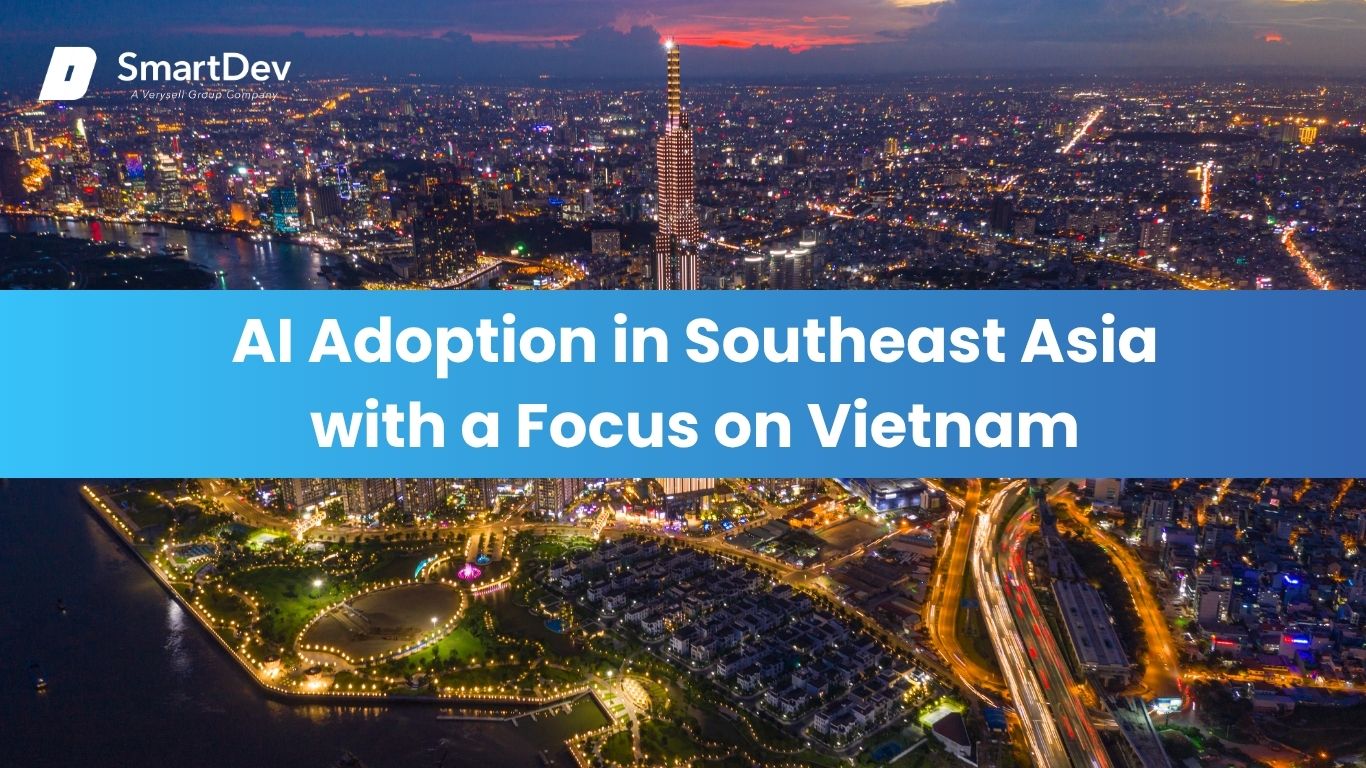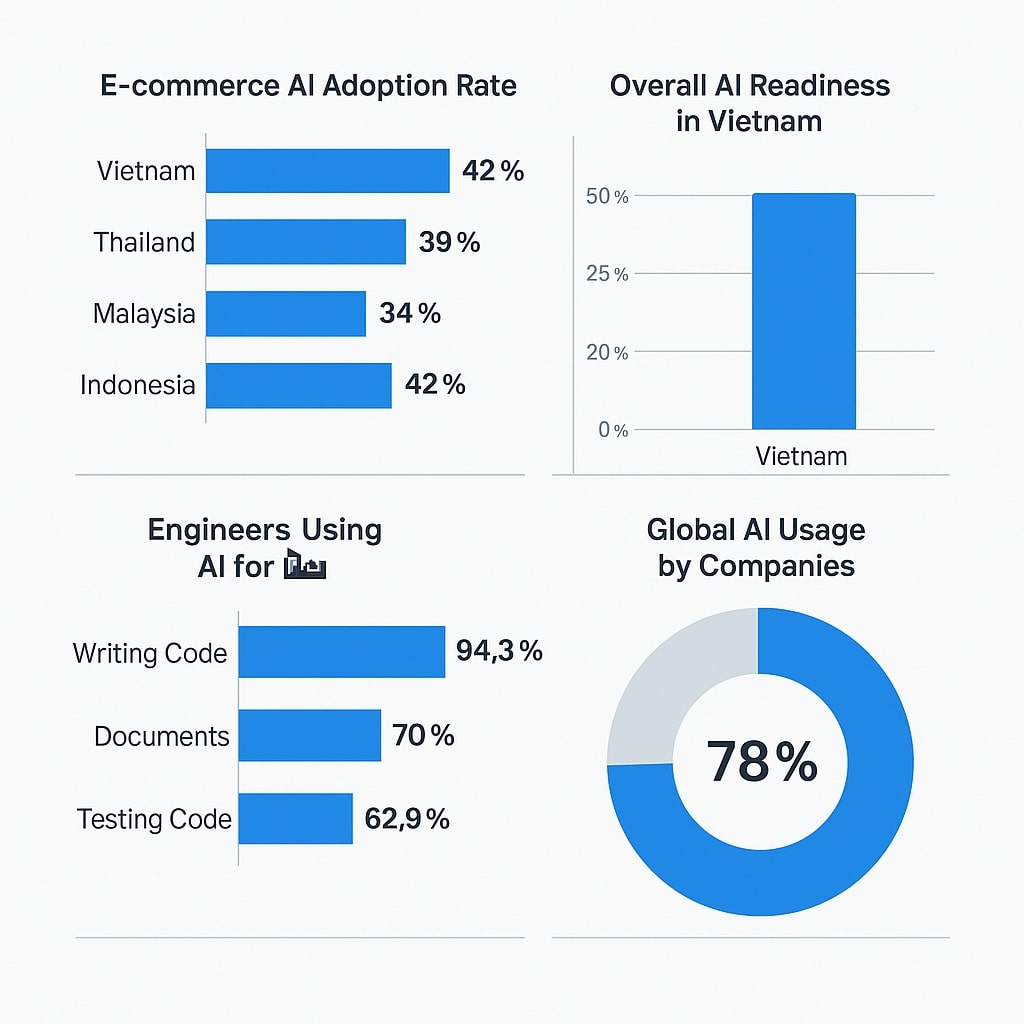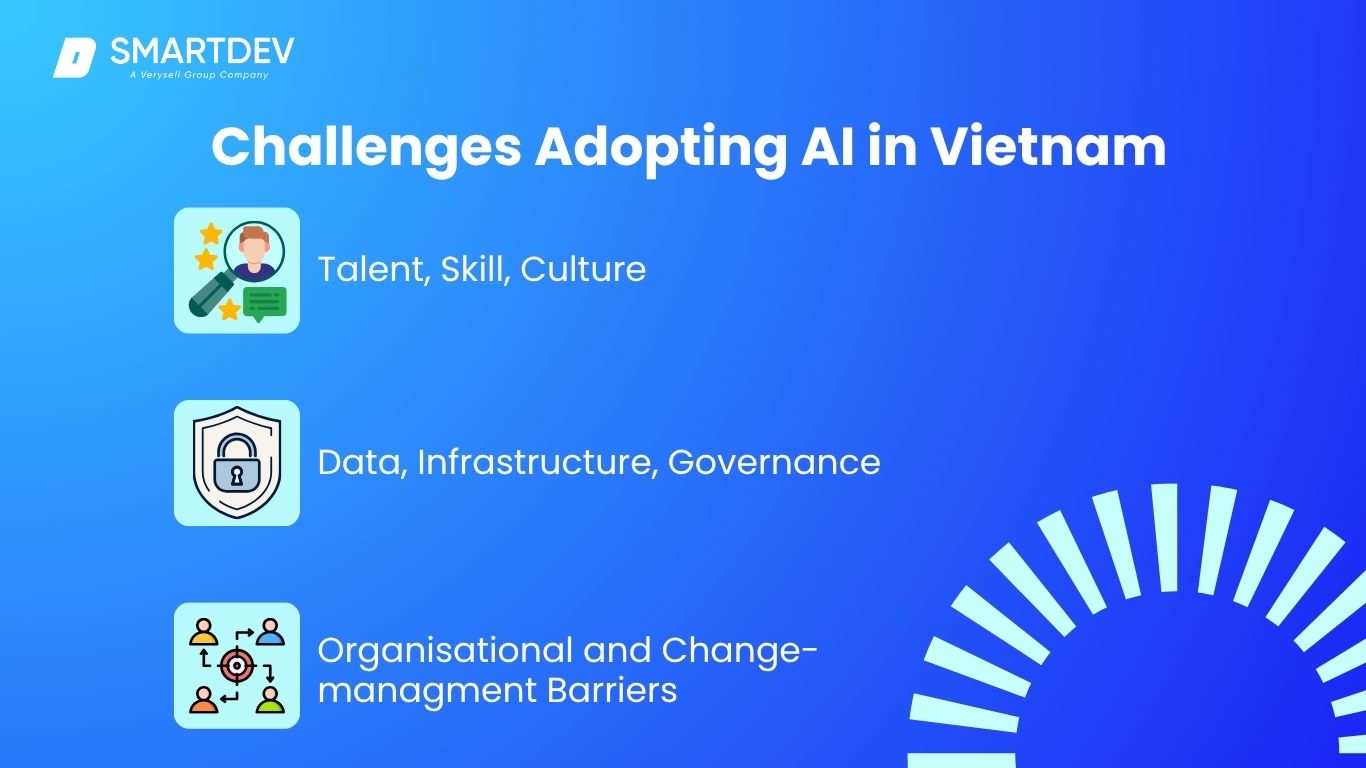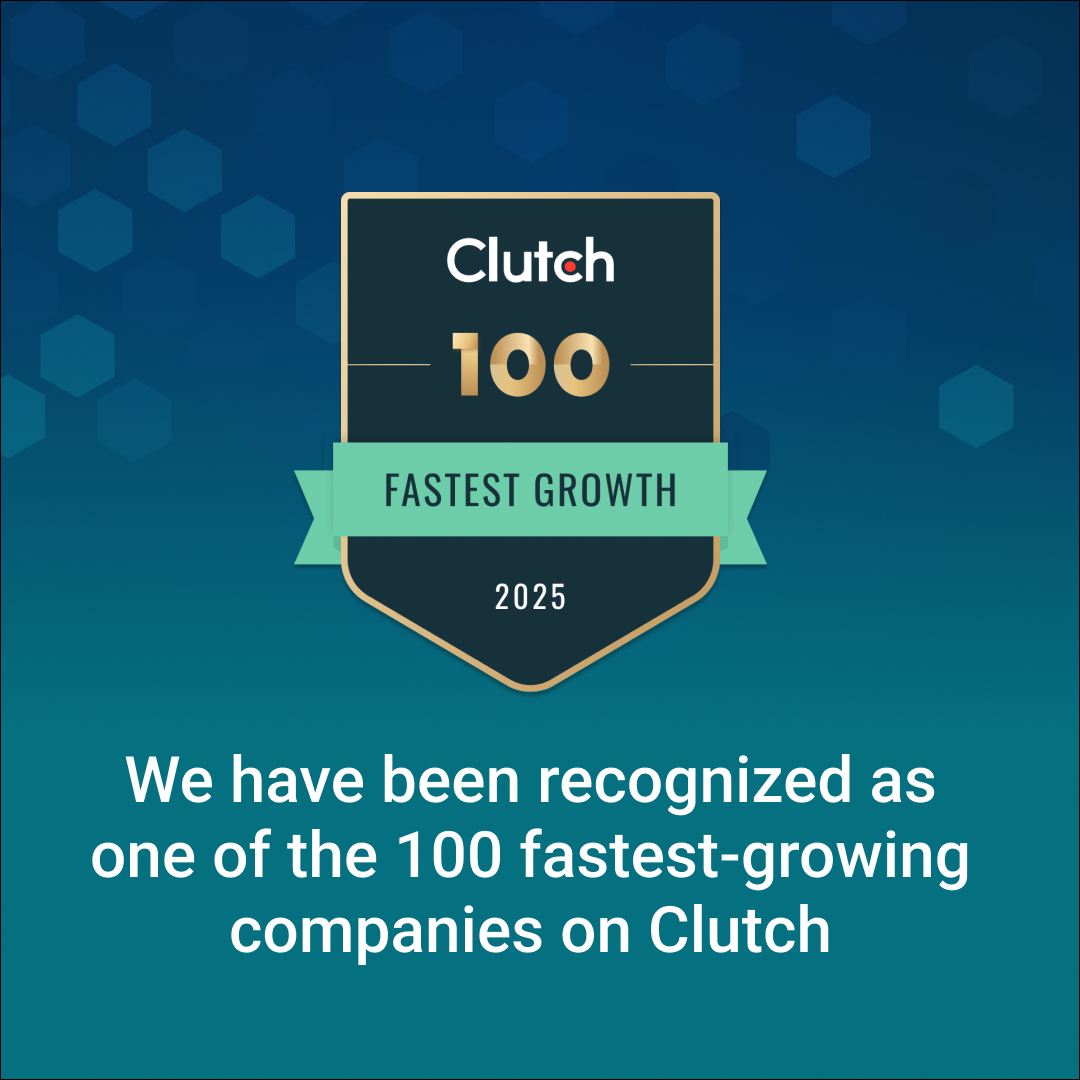Introduction
Artificial Intelligence (AI) is no longer merely a futuristic discourse. In 2025, it has crossed the threshold into being a core business imperative. Organizations worldwide are no longer treating AI as a speculative R&D exercise but as a strategic lever to streamline operations, elevate customer experiences, and catalyse innovation.
For enterprises in Vietnam and across Southeast Asia, this moment is particularly potent. The region has the chance not just to catch up, but to leapfrog into global competitiveness through smart adoption of AI. In this article, we benchmark global adoption, uncover Southeast Asia’s state of play with a focus on Vietnam, break down implementation dynamics, highlight the strategic benefits, and outline what businesses must do to stay ahead.
Global AI Adoption in 2025: The Big Picture
Market Scale and Growth Projections
Globally, AI is scaling rapidly. According to market trackers, the global AI sector is projected to reach approximately US $254.5 billion in 2025, growing at a ~36.9% CAGR toward 2031. Similarly, the long-term productivity opportunity of AI is estimated at US $4.4 trillion in added growth potential from corporate use cases. What this means: AI is not a marginal innovation any longer. It’s a foundational technology driving large-scale transformation.
Enterprise Penetration & Functional Deployment
In terms of enterprise penetration, the recent McKinsey & Company “State of AI” survey shows that 78% of companies now use AI in at least one business function. Within that: about 71% of respondents say they regularly use generative AI (gen AI) in at least one function. However, only about 1% of firms describe themselves as “mature” in AI deployment (i.e., AI fully embedded, producing major business outcomes). This gap—between adoption and maturity—is where much of the challenge lies.
Key Use Cases: Automation, Analytics & Beyond
AI is being deployed across a suite of use cases:
-
Marketing automation & personalization: AI enables hyper-targeted campaigns, automated content generation, scaled creative output.
-
Predictive analytics for customer insights: Real-time data is used to forecast behaviour, tailor experiences.
-
Content creation & creative optimization: Generative AI supports brand teams with visuals, ad copy, social content at scale.
-
Customer experience enhancement: Chatbots, virtual assistants, recommendation engines delivering personalised interactions.
-
Operational analytics & process automation: Beyond front-office, AI is being embedded in workflows, reporting, decision-making across functions.
Despite these deployment trends, many organisations report limited bottom-line impact. The headline number of “use” masks the fact that enterprise-wide value capture remains low. The McKinsey survey finds that companies that adopt best practices in strategy, talent, operating model, data, technology and adoption-scaling are the ones that do capture value.
AI Adoption in Southeast Asia – Spotlight on Vietnam
Regional Landscape and Vietnam’s Position
Southeast Asia presents a fertile environment for AI adoption: youth-heavy demographics, rapidly digitising infrastructure, and governments signalling strategic support make for strong tailwinds. For example, the region has more than 213 million people aged 14-34 and over 70% smartphone penetration.
For Vietnam in particular: The country is gaining momentum. A recent article notes that Vietnam’s 2024 Government AI Readiness Index ranked it among the top five in ASEAN, and globally it placed third in “AI trust” and fifth in “AI acceptance.”
Vietnam has a clear policy in place: the National Strategy on Research, Development and Application of Artificial Intelligence to 2030 was established to build a mature AI ecosystem, align with socio-economic goals, and embed ethics and governance at the core.
The environment is favourable. The ambition is real. The next step is execution.
Vietnam Adoption Statistics & Key Signals
Here are some of the standout metrics that show both traction and room for growth:
-
A study across e-commerce merchants in six ASEAN countries found that Vietnam and Indonesia each had an AI adoption rate of 42%, surpassing Singapore and Thailand (39%).
-
In Vietnam, a survey found 94.3% of engineers used AI for writing code, 70% used it to write documents, and 62.9% applied it to testing code — the highest regionally.
-
On infrastructure/data readiness: Vietnam firms rated 49% on “Overall AI Readiness”, compared with 44% average for the region.
-
On data systems and ecosystem: Vietnam is building open-data repositories, large-scale Vietnamese-language datasets (e.g., “VIGEN”), underpinning AI localisation and cultural alignment.
These signals show that Vietnam is not just aware of AI — it is actively building its ecosystem. But the gap between ambition/adoption and scaled deployment remains.
Sector Focus: Retail, Manufacturing & Public Sector
Retail & E-commerce
Vietnam’s retail and e-commerce sectors are hotbeds of AI application: recommendation engines, smart inventory management, personalised customer engagement. The above 42% adoption among sellers shows active business use.
Public Sector & Government
Vietnam is piloting AI in public service delivery — virtual assistants, facial recognition, traffic monitoring — showing the public sector is participating, not just the private sector.
Manufacturing & Industry
Manufacturing is a natural fit for Vietnam’s economy and for AI: automation, predictive maintenance, supply-chain optimisation. While statistics are fewer, the potential is considerable given Vietnam’s export-oriented manufacturing base.
Explore how businesses can build a successful AI adoption strategy: balancing innovation, operational efficiency, and regulatory alignment to stay competitive in a rapidly evolving digital landscape.
SmartDev’s AI experts provide a clear roadmap for businesses to integrate AI effectively - Ensuring transparency, accountability, and compliance with evolving regulatory standards.
Learn how organizations accelerate digital transformation securely through phased AI adoption - Combining governance frameworks with performance-focused implementation strategies.
Start My Journey to Successful AI AdoptionChallenges to AI Adoption in Vietnam
For all the positive signals, several barriers are holding back scaled AI transformation. If enterprises want to capture value, they must address these.
Talent, Skills & Culture
-
Shortage of AI-specific talent: A large number of IT graduates in Vietnam lack deep AI expertise; many firms report a talent gap (55%) as the strongest barrier.
-
Workforce transition risk: Up to 85% of repetitive-task workers may face displacement or need re-skilling as AI expands — which introduces organisational and social risk.
-
Leadership and cultural lag: Only about 24% of companies feel confident in their workforce’s AI capabilities; just 12% of large enterprises say they have a comprehensive AI strategy.
Data, Infrastructure & Governance
-
Infrastructure and compute constraints: Many AI initiatives in Vietnam remain at the “basic use-case” level, rather than advanced or innovative deployment.
-
Fragmented data and silos: High-quality, integrated data remains rare, undermining model reliability and scalability.
-
Regulatory and governance hurdles: Businesses anticipate rising compliance costs (71% predicted) and many already allocate ~18% of budgets to compliance rather than innovation.
Organisational & Change-Management Barriers
-
Low strategic penetration: Few large enterprises in Vietnam have launched new AI-driven products or services — only about 11%.
-
Pilot-trap: Many organisations are stuck in pilot phases without clear pathways to scale and embed.
-
Siloed operations and legacy systems: When IT, data, and business teams don’t align, AI deployment is slow; legacy systems often block integration.
-
Lack of metrics and change management: Without KPIs, incentive alignment, and workforce preparation, AI remains an initiative rather than an operational muscle.
Strategic Benefits of AI for Enterprises in Vietnam & Beyond
For organisations that do succeed in embedding AI deeply, the rewards are significant. Here are the four main strategic domains.
1. Operational Optimisation & Cost Reduction
AI helps eliminate repetitive manual work (e.g., invoice processing, data entry), implement predictive maintenance, optimise resource allocation in real-time.
By redesigning workflows and embedding AI, enterprises can scale operations without proportional headcount increase – a major advantage for Vietnam’s SME sector.
Firms integrating AI across key functions often report double-digit improvements in operating margins (global benchmarks).
This cost-savings and efficiency gain is a strong entry point for Vietnamese companies.
2. Innovation and Market Expansion
AI enables rapid product development, personalised digital services, and intelligence-driven market analysis. For example, Vietnamese fintech and retail firms are using predictive analytics to launch tailored financial products and region-specific marketing strategies.
AI also accelerates time-to-market by automating design, testing, deployment of digital services — allowing businesses to respond faster to shifting consumer trends.
Over time, AI shifts business models toward knowledge-based industries that compete on intelligence, not just cost.
3. Enhanced Customer Experience
The most visible impact of AI is often in customer interactions. With recommendation engines, chatbots, virtual assistants and real-time analytics, customer journeys become seamless, personalised and engaging.
In Vietnam’s booming e-commerce and service sectors, those businesses that use AI to understand behaviour, tailor recommendations and automate service workflows outperform competitors in satisfaction and retention.
Faster response, smarter targeting, fewer errors — all of which means stronger customer loyalty and margin expansion.
4. Predictive Insights and Resilient Operations
AI shifts companies from reactive to predictive strategy. By analysing historical and real-time data, companies can forecast demand fluctuations, avoid bottlenecks and recommend proactive interventions.
For Vietnam’s export-driven manufacturing and supply-chain-intensive sectors, this predictive capability can mean the difference between disruption and continuity. Resilient operations powered by AI protect margins and strengthen competitiveness in volatile global markets.
The Future of AI in Enterprise: What Comes Next

Sustainability, Cybersecurity & Responsible AI
The next chapter of AI is being written along lines of responsibility and sustainability. Businesses are increasingly using AI to optimise energy consumption, monitor carbon footprints and support ESG (environmental, social, governance) reporting.
Simultaneously, cyber threats are evolving. AI-driven cybersecurity systems that detect anomalies and neutralise attacks are becoming indispensable.
Crucially, ethical governance is not optional. As AI becomes embedded in decision-making, companies must ensure fairness, transparency, and data privacy. Establishing responsible AI frameworks (data stewardship, model accountability, regulatory compliance) is a must for securing customer trust and investor confidence.
Vietnam’s Role in the ASEAN AI Ecosystem
Vietnam is fast positioning itself as a regional AI leader. With its national AI strategy, strong startup ecosystem, youth-digital literacy and global partnerships, the country is building the ingredients for leadership in Southeast Asia.
Integration into the ASEAN digital cooperation framework opens access to shared markets and resources — giving Vietnamese enterprises the ability to scale innovation beyond domestic borders. Private investment and international collaboration add fuel to this fire. If executed well, Vietnam can anchor the region’s next wave of digital transformation.
How Businesses Should Prepare for the AI Future
Here’s the action plan for companies that want to win in the AI era:
-
Define strategic clarity: Focus on use-cases tied to measurable outcomes rather than chasing AI for the sake of novelty.
-
Invest in talent and infrastructure: Build data platforms, get the right compute capacity, develop AI fluency across teams.
-
Foster capable culture: Encourage experimentation, continuous learning, cross-functional collaboration.
-
Embed governance and ethics: From day one, build in data stewardship, model audits, bias mitigation, privacy controls.
-
Form strategic partnerships: Engage technology firms, academia, solution providers (e.g., SmartDev) to accelerate adoption and reduce risk.
-
Scale, don’t just pilot: Avoid the pilot trap. Develop roadmap, metrics, rollout plans, feedback loops to convert proof-of-concepts into embedded operations.
Conclusion: Embedding AI as Structural Capability
The narrative is unmistakable: in 2025, AI has transitioned from novelty to necessity. Globally, organisations are adopting AI at scale, yet few have fully captured its potential. In Vietnam and Southeast Asia, momentum is strong—thanks to rising digital literacy, supportive government policy and business ambition.
But the real challenge lies ahead: converting intent into enterprise-wide scale, embedding AI into workflows, and delivering measurable business value.
For Vietnamese enterprises, the strategic advantage is real: by embracing AI now they can optimise operations, deliver differentiated customer experiences and expand into new markets. They have a shot at not merely catching up, but leading.
The obstacles—talent shortages, data readiness and governance hurdles—are significant, but they also mean the payoff for those who execute well is proportionally larger.
Ultimately, the future belongs to those who treat AI not as a project, but as a structural capability. For SmartDev and enterprises in Vietnam and across Southeast Asia, the time to act is now. Those who do will define tomorrow’s innovators.













